How to Plant Water Spinach Seeds: Thrive in Your Garden
- March 18, 2024
- 2 comment
Learn How to Plant Water spinach seeds, also known as Ipomoea aquatica, are a popular leafy green vegetable, especially in Southeast Asian cuisines. It’s known for its rapid growth and adaptability to various water conditions, making it a favorite among home gardeners. In this guide, we’ll walk you through the steps of planting water spinach seeds for a successful harvest.
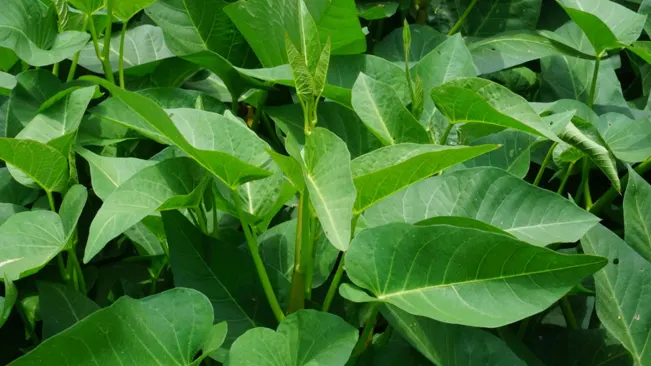
Nutritional Benefits of Water Spinach
| Benefit | Description |
|---|---|
| Nutritional Value | High in vitamins A, C, and essential nutrients like iron, calcium, and magnesium. |
| Rich in Antioxidants | Contains antioxidants such as beta-carotene and lutein, which help combat oxidative stress and inflammation. |
| Aids in Digestion | High in dietary fiber, which promotes healthy digestion and prevents constipation. |
| Supports Eye Health | Abundant in vitamin A and beta-carotene, which are crucial for maintaining good vision and eye health. |
| Boosts Immunity | Vitamin C content helps strengthen the immune system. |
| Improves Heart Health | Contains components that can help regulate cholesterol levels, benefiting heart health. |
| Beneficial for Diabetics | Low in calories and carbohydrates, making it a suitable addition to a diabetic diet. |
| Promotes Healthy Skin | Vitamins A and C are essential for healthy skin and may help in reducing the signs of aging. |
| Detoxifying Properties | May aid in detoxifying the body, thanks to its high chlorophyll content. |
| Low in Calories | Ideal for weight management diets due to its low calorie content. |
List on How To Plant Water Spinach Seeds
- Choosing the Right Location
- Preparing the Soil
- Sowing the Seeds
- Watering
- Germination
- Thinning Seedlings
- Fertilizing
- Pest and Disease Management
- Harvesting
Materials Needed
- Water spinach seeds
- Potting mix or garden soil
- Pots or a prepared garden bed
- Watering can or hose
- Fertilizer (optional)
Choosing the Right Location
Water spinach thrives in a sunny location. If you’re planting it outdoors, choose a spot that receives at least 5-6 hours of sunlight daily. For indoor planting, a south-facing window is ideal.

- Sunlight Requirements:
- Water spinach is a sun-loving plant. It requires ample sunlight to grow healthily.
- Outdoors, a spot that receives full sun for at least 5-6 hours a day is necessary. This could be an open area in your garden or a spot that isn’t shaded by trees or buildings.
- For indoor planting, positioning the plant near a south-facing window ensures maximum sunlight. South-facing windows typically provide the most consistent light throughout the day, crucial for the growth of water spinach.
- Heat Tolerance:
- Water spinach is tolerant of high temperatures, making it ideal for warmer climates.
- It can thrive in hot conditions as long as it has enough water. This heat tolerance makes it a popular choice in tropical and subtropical regions.
- Soil Considerations:
- Although water spinach adapts to various soil types, it performs best in rich, fertile, and well-draining soil.
- The soil should retain moisture well since water spinach prefers a consistently moist environment.
- If the natural soil in your garden is not ideal, consider amending it with organic matter such as compost or well-rotted manure to improve fertility and moisture retention.
- Water Requirements:
- The plant’s name, “water spinach,” hints at its preference for moist conditions. It’s essential to ensure that the soil remains evenly moist.
- In an outdoor garden, mulching can help retain soil moisture and reduce the frequency of watering.
- Space and Airflow:
- Water spinach needs space to spread out. Ensure there’s enough room between plants for air circulation, which is vital to prevent fungal diseases.
- Proper spacing also allows each plant to receive adequate sunlight and reduces competition for nutrients.
- Protection from Wind:
- While it needs good airflow, water spinach is somewhat delicate and can benefit from protection against strong winds, which might damage the stems and leaves.
- Accessibility for Maintenance:
- Choose a location that’s easily accessible for regular maintenance tasks like watering, weeding, and harvesting.
Preparing the Soil
Water spinach (Ipomoea aquatica), with its preference for moist and nutrient-rich environments, thrives in soil that can both retain moisture and provide essential nutrients. The soil preparation is a crucial step in ensuring healthy growth and abundant yield. Here’s a more detailed look into the process:

- Soil Type: This plant does well in a variety of soil types but prefers loamy or sandy loam soils. These soil types are ideal because they hold moisture well while also providing good drainage. Heavy clay soils can be modified with amendments to improve drainage.
- Soil pH: Water spinach is adaptable to a wide range of pH levels, but it performs best in slightly acidic to neutral soil (pH 6.0 to 7.0). You can easily test your soil’s pH with a home testing kit and adjust accordingly using lime (to increase pH) or sulfur (to decrease pH).
- Adding Organic Matter: Whether you’re planting in pots or in a garden bed, the addition of organic matter is key. Compost, well-rotted manure, or leaf mold not only enriches the soil with nutrients but also improves its structure, enhancing its ability to retain moisture and nutrients. For potting mix, choose a high-quality, nutrient-rich blend that includes components like peat, compost, or coco coir to aid in moisture retention.
- Improving Drainage: While water spinach enjoys moist conditions, overly waterlogged soil can lead to root problems like rot. If drainage is a concern, especially in clay soils, consider raising the garden beds or amending the soil with sand or perlite to improve water flow.
- Fertilizing: Before planting, you can mix in a balanced, slow-release fertilizer to give the plants a good start. Water spinach responds well to nitrogen-rich fertilizers, which encourage lush leaf growth. However, avoid over-fertilizing, as this can lead to excessive foliage growth at the expense of overall plant health.
- Mulching: After planting, applying a layer of organic mulch, such as straw or shredded leaves, can help maintain soil moisture, regulate temperature, and suppress weeds.
- Regular Watering: Once planted, it’s important to keep the soil consistently moist. Water spinach’s love for water means regular watering is crucial, especially in hot, dry periods.
- Preventing Pests and Diseases: Healthy soil helps in preventing pests and diseases. Ensure good air circulation around the plants and avoid overhead watering to reduce the risk of fungal diseases.
Sowing the Seeds
Soaking the Seeds
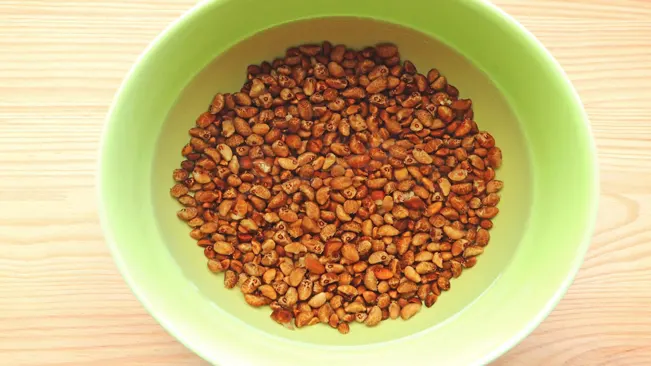
- Purpose: Soaking the seeds in water is a crucial step in the planting process. This method is used to soften the hard outer coating of the seeds, which can significantly speed up germination. The soaking process imitates the natural conditions that seeds would experience in the wild, such as absorbing moisture from rain.
- Duration: 24 hours is generally sufficient. Exceeding this duration might cause the seeds to begin germinating in water, which isn’t ideal for transplanting.
Planting Depth and Spacing

- Depth: Planting the seeds at about 1/2 inch deep ensures that they are covered sufficiently to maintain moisture but are not too deep to struggle with germination. This depth allows the seeds to get enough warmth and light as they begin to sprout.
- Spacing: Spacing the seeds about 2 inches apart allows each seedling enough room to sprout and grow without overcrowding. Overcrowded seedlings can compete for light and nutrients, hindering their growth.
Row Planting

- Row Spacing: If you’re planting in rows, maintaining about 12 inches between each row is recommended. This spacing gives you room to walk between the rows for weeding and harvesting, and it ensures adequate air circulation, reducing the risk of fungal diseases.
- Benefits of Row Planting: This method helps in organizing the garden, makes it easier to identify and manage plants, and simplifies maintenance tasks like watering and weeding.
Watering
Water spinach (Ipomoea aquatica), being a semi-aquatic tropical plant, thrives in consistently moist environments. Proper watering is crucial for its growth and health. Here are some detailed insights and tips:
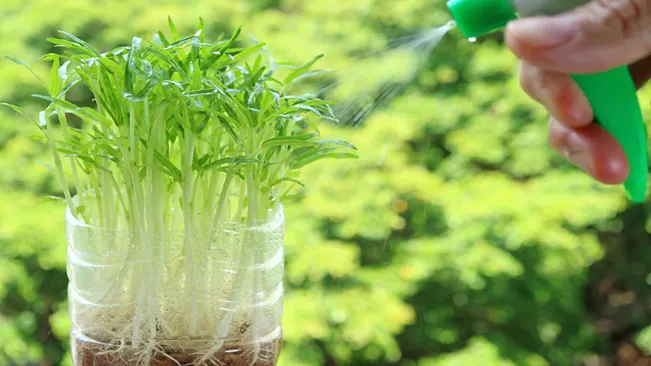
- Frequency of Watering: The frequency of watering water spinach largely depends on the weather conditions and the soil type. In hotter climates or during dry spells, you may need to water the plant more frequently. Conversely, in cooler or more humid conditions, the plant will require less frequent watering.
- Checking Soil Moisture: Before watering, it’s a good practice to check the soil moisture. The top inch of the soil should be moist but not soggy. If the soil feels dry at this depth, it’s time to water the plant.
- Watering Technique: Water gently at the base of the plant to avoid dislodging the seeds or damaging young seedlings. Avoid splashing water on the leaves, as this can increase the risk of fungal diseases. Using a watering can with a long spout or a soaker hose can help target the water directly to the soil without disturbing the plant.
- Morning Watering: Watering in the morning is ideal as it allows any excess water on the leaves or the soil surface to evaporate during the day, reducing the risk of fungal infections.
- Avoiding Waterlogged Soil: While water spinach loves moisture, it doesn’t do well in waterlogged conditions. Ensure that your planting site or containers have good drainage. Overly saturated soil can deprive the roots of oxygen, leading to root rot.
- Mulching: Applying a layer of organic mulch around the base of the plants can help retain soil moisture and reduce the need for frequent watering. Mulch also helps to regulate soil temperature and suppresses weed growth.
- Adjusting for Rainfall: If you’re growing water spinach outdoors, adjust your watering schedule based on rainfall. After a good rain, you might not need to water the plants for a few days.
- Signs of Overwatering and Underwatering: Yellowing leaves can be a sign of overwatering, while wilting or drooping leaves often indicate underwatering. Adjust your watering practices accordingly if you observe these signs.
Germination
The seeds should germinate within a week. Once the seedlings emerge, ensure they receive enough light and water.

Conditions for Germination
- Temperature: Water spinach seeds germinate best in warm conditions. The ideal temperature range for germination is between 25°C to 30°C (77°F to 86°F).
- Moisture: Consistent moisture is crucial. The soil should be kept evenly moist but not waterlogged. Overly soggy conditions can lead to rot.
Seed Preparation
- Soaking: Soaking the seeds for 24 hours prior to planting can significantly enhance germination rates. The water softens the seed coat, allowing the embryo inside to access the moisture and nutrients it needs to sprout more efficiently.
Planting Depth and Spacing
- Depth: Seeds should be sown about 1/2 inch deep in the soil. This depth provides the right balance of moisture retention and access to oxygen.
- Spacing: Initially, seeds can be planted close together (around 2 inches apart). Once germinated and grown a few inches tall, seedlings should be thinned to allow about 6 inches of space between plants for optimal growth.
Germination Timeframe
- Water spinach seeds usually start to germinate within a week under optimal conditions. However, some variation is normal depending on the environmental conditions and seed quality.
Post-Germination Care
- Light: Once seedlings emerge, they require plenty of light. If grown indoors, a south-facing window or artificial grow lights can provide sufficient light.
- Watering: Continue to keep the soil moist as the seedlings grow. The goal is to maintain a balance where the soil is neither dry nor excessively wet.
- Thinning: If seedlings are crowded, thin them by gently removing weaker seedlings. This ensures that the remaining plants have enough space and resources to develop fully.
Thinning Seedlings
When the seedlings are a few inches tall, thin them out so that the strongest plants are about 6 inches apart. This gives each plant enough space to grow.
Why Thinning Seedlings is Important
- Avoids Overcrowding: When seedlings emerge closely together, they compete for light, nutrients, and water, leading to weaker growth.
- Promotes Air Circulation: Adequate space between plants ensures better air circulation, reducing the risk of fungal diseases.
- Stronger Plants: Thinning allows the strongest seedlings to develop better root systems and healthier foliage.
How to Thin Water Spinach Seedlings
- Wait for the Right Time: Start thinning when the seedlings are a few inches tall and have at least one set of true leaves (these are the leaves that appear after the initial seedling leaves).
- Select the Strongest Seedlings: Look for seedlings that appear the healthiest and most vigorous. These are the ones you want to keep.
- Gentle Removal: Carefully pull out the weaker seedlings, ensuring minimal disturbance to the roots of the ones you’re keeping. Alternatively, you can snip them at the soil line with scissors. Pulling might be risky as it can disturb the roots of neighboring plants.
- Spacing: Ensure the remaining seedlings are spaced about 6 inches apart. This spacing gives each water spinach plant enough room to grow to its full size.
- Water After Thinning: Once thinning is complete, gently water the area to help settle the soil around the remaining seedlings.
- Use Thinned Seedlings: The removed seedlings need not be wasted. If they’re big enough, you can transplant them to another area or use them as microgreens.
Fertilizing
While water spinach is a hardy plant that can grow in less-than-ideal soil conditions, providing additional nutrients through fertilization can significantly enhance its growth, yield, and nutritional quality. Fertilizers supply essential nutrients that might be deficient in the soil, leading to healthier plants and a more abundant harvest.
Types of Fertilizers Suitable for Water Spinach
- Balanced, Water-Soluble Fertilizers: These are commonly used for water spinach. A balanced fertilizer, typically marked with an equal N-P-K (Nitrogen, Phosphorus, Potassium) ratio like 10-10-10 or 20-20-20, ensures that the plant receives a uniform amount of essential nutrients. Water-soluble fertilizers are easy to apply and are quickly absorbed by the plants.
- Organic Options: For those preferring organic gardening, well-rotted manure or compost can be a great choice. These not only provide nutrients but also improve soil structure and water retention. Organic liquid fertilizers like seaweed extract or fish emulsion are also beneficial.
How to Fertilize
- Frequency: Once a month is generally sufficient. Over-fertilizing can harm the plant and the environment.
- Method of Application: For water-soluble fertilizers, dissolve the recommended amount in water and apply it to the soil around the plants. Ensure even distribution to avoid nutrient concentration in one area.
- Monitoring Plant Response: After fertilizing, observe the plant’s response. Healthy growth and deep green leaves are indicators of effective fertilization. Yellowing leaves or stunted growth may indicate nutrient deficiencies.
- Adjusting Fertilization: Based on the plant’s response, you might need to adjust the frequency or type of fertilizer. For instance, if the plant shows signs of nitrogen deficiency (like yellowing of older leaves), a fertilizer higher in nitrogen might be necessary.
- Consider Soil Tests: For optimal results, especially in larger gardens, consider conducting a soil test to ide
Pest and Disease Management
Watch out for pests like aphids and caterpillars. Use organic pesticides if necessary. Water spinach is relatively disease-resistant, but avoid wetting the foliage too much to prevent fungal diseases.
Pest Management
- Common Pests:
- Aphids: Small, soft-bodied insects that can be green, yellow, black, or brown. They typically feed in clusters on the undersides of leaves.
- Caterpillars: These larvae of butterflies and moths can be various sizes and colors. They chew on leaves, causing noticeable damage.
- Prevention:
- Healthy Plant Growth: Healthy plants are less susceptible to pest attacks. Ensure your water spinach gets adequate nutrients, water, and sunlight.
- Companion Planting: Planting garlic or onions nearby can help deter aphids due to their strong scent.
- Monitoring:
- Regularly inspect your plants, especially the undersides of leaves, for early signs of pests.
- Treatment:
- Natural Predators: Introduce natural predators like ladybugs, which feed on aphids.
- Organic Pesticides: Neem oil or insecticidal soaps can be effective against aphids and caterpillars. Always follow the instructions on the label.
- Manual Removal: In mild cases, pests like caterpillars can be picked off by hand.
Disease Management
- Common Diseases:
- Fungal diseases such as rust or leaf spot can occur, especially in humid conditions.
- Prevention:
- Air Circulation: Ensure good air circulation around plants to reduce humidity.
- Avoid Overhead Watering: Water at the base of the plant to keep foliage dry.
- Crop Rotation: If planting water spinach in subsequent seasons, rotate the planting area to prevent soil-borne diseases.
- Monitoring:
- Regularly check for signs of disease, such as discolored leaves or unusual spots.
- Treatment:
- Fungicides: Apply organic fungicides if you notice signs of fungal diseases. Copper-based fungicides can be effective.
- Remove Affected Parts: If you detect diseased leaves or stems, remove them immediately to prevent the spread.
Harvesting
Water spinach can be harvested as early as 30 days after planting. Cut the leaves and stems with scissors, leaving about 2 inches of the plant above the soil for regrowth.
Timing of the First Harvest
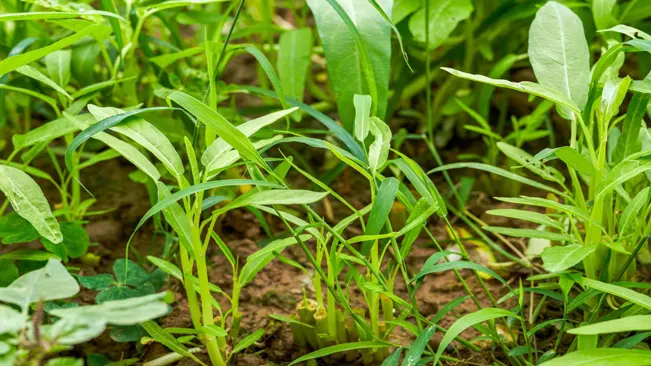
- As mentioned, water spinach can be ready for its first harvest about 30 days after planting. This quick turnaround makes it an excellent choice for gardeners who want to enjoy fresh greens without a long wait.
Identifying Harvest-Ready Plants

- Look for plants with long, tender stems and vibrant green leaves. These are indicators that the plant is mature enough for harvesting. Avoid harvesting if the leaves look yellowed or the stems appear too woody.
Harvesting Technique
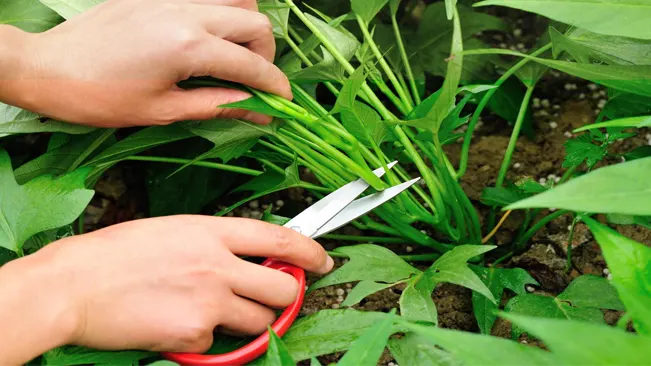
- Use clean, sharp scissors or gardening shears for harvesting. Gently hold a stem and cut it, ensuring you leave at least 2 inches of the stem above the soil. This practice encourages the plant to regrow quickly for future harvests.
- You can choose to harvest entire stems or just select leaves. If you’re harvesting for immediate consumption, picking leaves might be more practical. However, for promoting robust regrowth, cutting the stem is preferable.
Regrowth and Subsequent Harvests

- After harvesting, water spinach will typically regrow, allowing for multiple harvests from the same plant. In ideal growing conditions, you can expect to harvest from the same plant every few weeks.
- Ensure the plant continues to receive adequate water and sunlight after each harvest to encourage healthy regrowth.
Post-Harvest Care
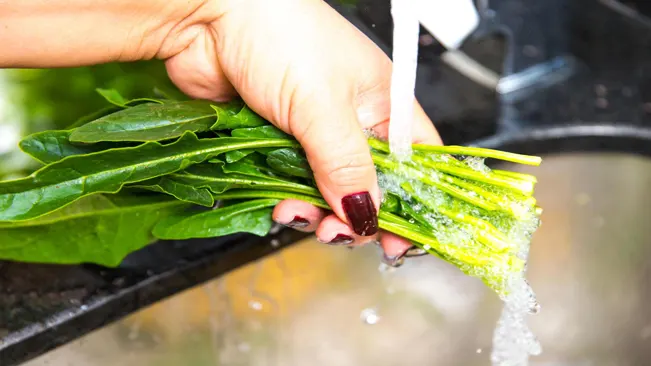
- Once harvested, rinse the water spinach thoroughly under clean water to remove any soil or debris.
- It’s best to use water spinach soon after harvesting, as the leaves and stems are most tender and flavorful when fresh. However, if you need to store them, wrap the leaves in a damp paper towel and place them in a plastic bag in the refrigerator. They should stay fresh for a couple of days.
Harvesting for Seed Collection
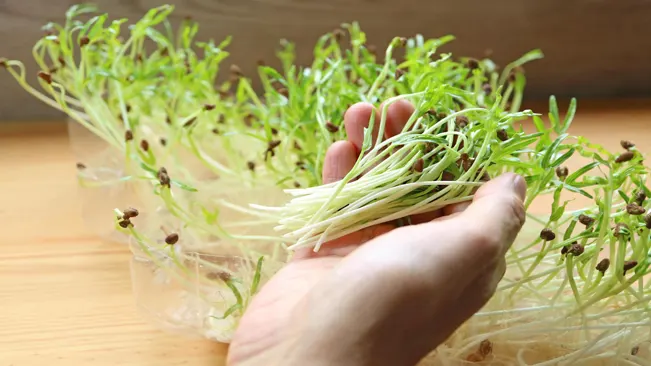
- If you’re interested in collecting seeds for future planting, allow some of your water spinach plants to flower and go to seed. The flowers are typically white or pale pink, and the seeds will develop after the flowers have bloomed.
Related Post:
- How to Grow Breadfruit: Essential Tips for a Thriving Tree
- How to Grow Jackfruit: A Beginner’s Guide
- How to Grow Runner Beans: A Comprehensive Guide for Bountiful Harvests
- How to Grow Jicama: Your Easy Guide to Cultivating the Mexican Yam Bean
- How to Grow Cinnamon Basil: A Beginner’s Guide to Aromatic Gardening
- How to Grow Roma Tomatoes: Expert Tips for a Lush Homegrown Harvest
- How to Grow Blackberries: Easy Steps to Grow and Nurture Your Own
Conclusion
Planting water spinach is a rewarding experience. With its fast growth and minimal care requirements, it’s an excellent choice for both beginner and experienced gardeners. Follow these simple steps, and you’ll be on your way to enjoying fresh, home-grown water spinach in your salads, stir-fries, and more.
FAQs (Frequently Asked Questions)
- What is the best time of year to plant water spinach seeds?
In tropical climates, water spinach can be planted year-round. In temperate regions, plant the seeds after the last frost, typically in late spring or early summer. - How long does it take for water spinach seeds to germinate?
Water spinach seeds typically germinate within 7 to 14 days, provided the conditions are warm and moist. - Do water spinach seeds require any special preparation before planting?
Soaking the seeds in water for 24 hours before planting can improve germination rates by softening the seed coat. - How deep should I plant the seeds?
Plant water spinach seeds about 1/2 inch deep in the soil. - What kind of soil is best for growing water spinach?
Water spinach prefers moist, well-draining soil with a good amount of organic matter. The soil should be kept consistently moist. - How much sunlight does water spinach need?
Water spinach thrives in full sunlight, requiring at least 5-6 hours of direct sunlight daily. - How often should I water water spinach?
Keep the soil evenly moist. Water the plant regularly, especially during dry periods, to maintain consistent soil moisture. - Do I need to fertilize water spinach?
While not always necessary, you can apply a balanced, water-soluble fertilizer once a month to encourage growth. - When can I start harvesting water spinach?
Water spinach can be harvested as early as 30 days after planting. Harvest the leaves and stems as needed, leaving at least 2 inches of the plant for regrowth. - How do I manage pests in water spinach?
Monitor for common pests like aphids and caterpillars. Use organic pesticides if necessary. Regularly check and remove any damaged leaves to keep the plant healthy.

Kristine Moore
Forestry AuthorI'm Kristine Moore, a seasoned garden landscaping professional with over 30 years of experience. My extensive career has been dedicated to transforming outdoor spaces into stunning, sustainable landscapes. With a deep understanding of horticulture, design principles, and environmental stewardship, I have become a respected figure in the field, known for creating harmonious, visually appealing, and eco-friendly gardens. My commitment to excellence and continuous learning in landscaping trends and techniques has solidified my reputation as an expert in garden design and implementation.













Water spinach is on the federal noxious weed list and is classified as a Class I Prohibited Aquatic by the state of Florida.
Jason
March 21, 2024 11:20 amThank you for sharing that information. It's important to be aware of local regulations and restrictions when it comes to gardening and planting certain species. In regions where water spinach is considered a noxious weed or is prohibited, it's crucial to respect those guidelines to prevent any ecological imbalance or legal issues. Always check with your local agricultural extension office or government agencies for guidance on what plants are suitable and allowed in your area.
Kristine Moore
March 25, 2024 6:07 am